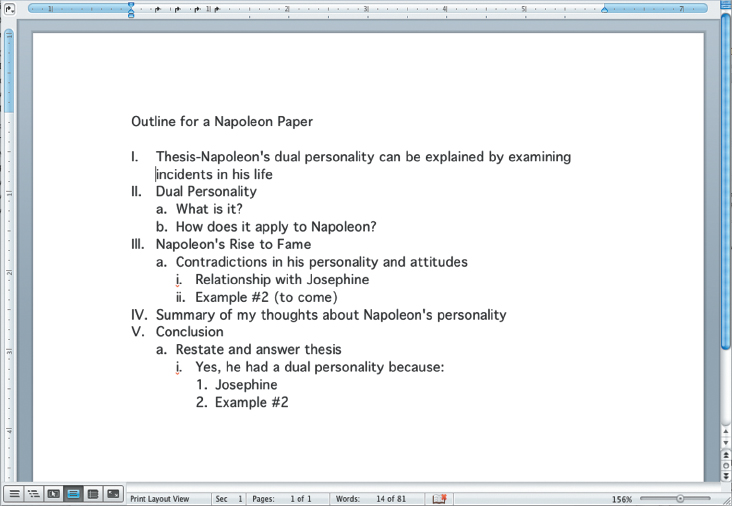Steps to Good Writing
The writing process typically includes the following steps:
- Prewriting
- Drafting
- Revising
Now, let’s look more in-depth at each one of these steps.
Step 1: Using Prewriting to Discover What You Want to Say Engaging in prewriting activities is the first step in the writing process. Prewriting simply means writing things down as they come to mind based on the information from the sources you found through your research along with your own ideas, without consciously trying to organize your thoughts, find exactly the right words, or think about structure. It can involve filling a page, whiteboard, or screen with words, phrases, or sentences.
The most commonly used prewriting activity is called freewriting. Freewriting simply means writing without worrying about punctuation, grammar, spelling, and background. In this step, you are writing without trying to organize your thoughts, to find exactly the right words, or to think about structure. Freewriting also helps you avoid the temptation to try to write and edit at the same time. It’s impossible to write well and at the same time try to organize, check grammar and spelling, and offer intelligent thoughts to your readers. If you are freewriting on your computer or tablet, turn off the grammar and spelling checkers.
When you freewrite, you might notice that you have more ideas than can fit into one paper, and this is very common. Fortunately, freewriting helps you choose, narrow, and investigate a topic. It helps you figure out what you really want to say as you make connections between different ideas. When you freewrite, you’ll see important issues more clearly—issues that you can use as keywords in developing your theme. Remember, keywords are synonyms, related terms, or subtopics that we use to find materials for research papers.
YOUR TURN > WORK TOGETHER

Think for a minute about your writing process—the steps you go through when you write a major paper—and then share them with another student. Do the two of you use the same process? If not, what can you learn from each other?
Step 2: Drafting When you have completed your research with the help of your librarian, gathered a lot of information sources and ideas, and done some freewriting, it’s time to move to the drafting stage. Before you start writing your draft, you need to organize all the ideas you generated in the freewriting step and form a thesis statement, a short statement that clearly defines the purpose of the paper (see Figure 9.2).
Most students find that creating an outline helps them organize their thoughts, resulting in a clear structure from the thesis to the conclusion (see Figure 9.3 for an example). Once you’ve set the structure for your paper, you’ll add analysis and synthesis of your research findings and you’re well on your way to a final draft. Now, with your workable outline and thesis, you can begin paying attention to the flow of ideas from one sentence to the next and from one paragraph to the next, including headings and subheadings where needed. If you have chosen the thesis carefully, it will help you check to see that each sentence relates to your main idea. When you have completed this stage, you will have the first draft of your paper in hand.


Step 3: Revising The key to good writing is rewriting or revising, which is the stage at which you take a good piece of writing and do your best to make it great. After you draft your paper, read it once. You may need to reorganize your ideas, add smoother transitions, cut unnecessary words from sentences and paragraphs, rewrite some sentences or paragraphs, or use stronger words.
After you revise your paper, put it aside for at least a day and then reread it. Distancing yourself from your writing for a while allows you to see it differently later. You will probably find and correct more grammatical and spelling errors, reorganize your written ideas, and make your writing stronger as a result.
It also might help to share your paper with one or more of your classmates or a family member to get their feedback. You should also check to see if your college provides any writing or editing assistance. Many community colleges have a writing center or learning center where students can get help during any stage of the writing process: finding a topic, narrowing a topic, creating a thesis, outlining, drafting, rewriting, and revising. Once you have talked with your reviewers about their suggested changes, it will be your decision to either accept or reject them.
At this point, you are ready to finalize your writing and turn in your paper. Reread the paper one more time, and double-check spelling and grammar.